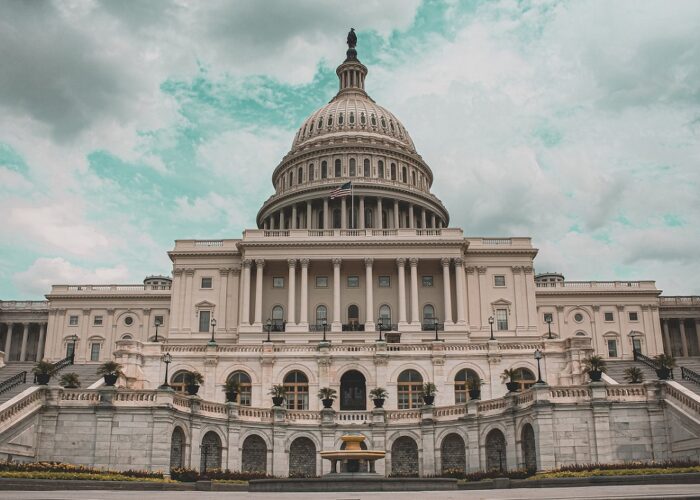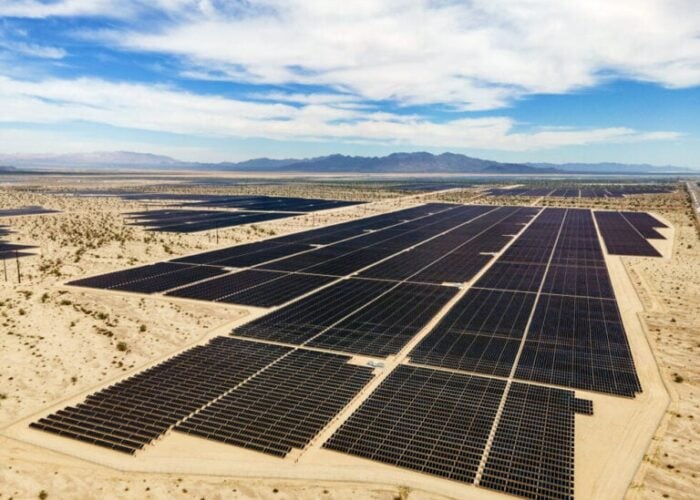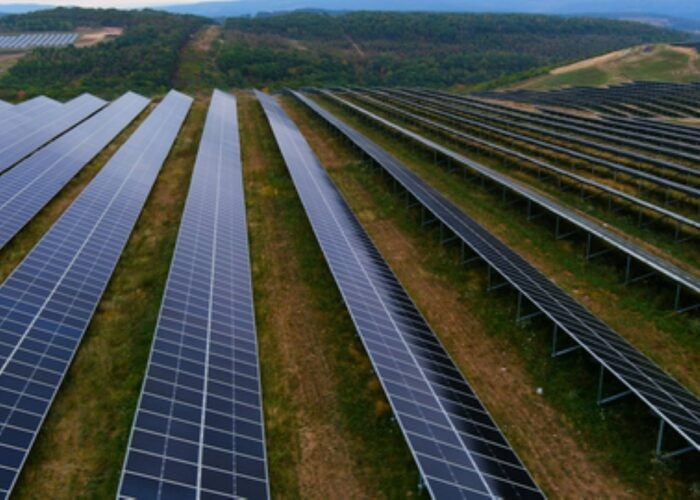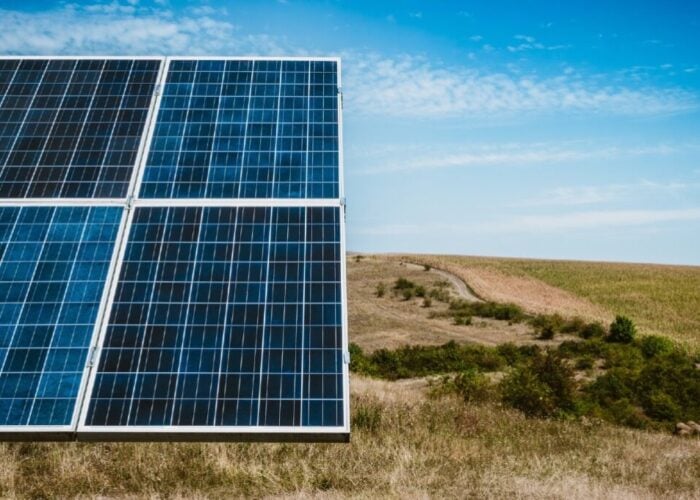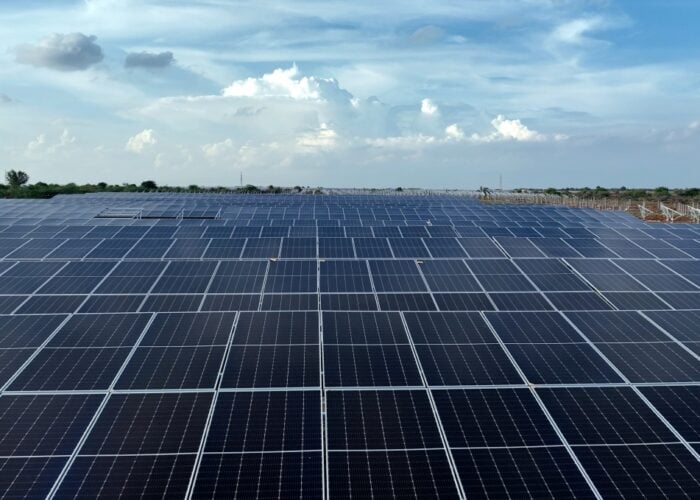
When asked whether there is cause for optimism in the US solar manufacturing industry, MJ Shiao is torn.
Since president Trump signed his budget reconciliation bill into law last month, the landscape for PV manufacturing and the solar market at large has shifted dramatically. Once-vital tax credits are coming to an early end, and a raft of new restrictions on supply seems likely to make things more difficult for US manufacturers, particularly smaller ones.
Try Premium for just $1
- Full premium access for the first month at only $1
- Converts to an annual rate after 30 days unless cancelled
- Cancel anytime during the trial period
Premium Benefits
- Expert industry analysis and interviews
- Digital access to PV Tech Power journal
- Exclusive event discounts
Or get the full Premium subscription right away
Or continue reading this article for free
On one hand, Shiao says the US has shown that it can manufacture solar at scale and sell that product to the market. There was roughly 50GW of nameplate solar module capacity online at the start of 2025, which was equal to annual deployments at the time, and solar cell capacity was growing.
“But it’s such a missed opportunity,” he says. “We’ve done some of the easier parts of the manufacturing process, and we were starting to do the hard things, like cell and wafer manufacturing and starting to think about new ways of producing polysilicon.”
He says that many of those plans are being scaled back thanks to the policy changes.
Shiao, vice president of supply chain and manufacturing at the American Clean Power Association (ACP), spoke with PV Tech Premium about the outlook for US solar manufacturing in light of the White House’s turn against clean energy.
Missing key information
Despite the “dozens of pages of ink” spilt over the new regulations and legislative framework around US solar, Shiao says things are still unclear.
New Foreign Entity of Concern (FEOC) rules prohibit Chinese solar products in US supply chains or “material assistance” from Chinese companies, if a company wants to access the remaining renewables tax credits, either for deployments or the 45X Advanced Manufacturing credit.
“It really depends on how Treasury ultimately interprets a lot of these rules, and it’s really complex,” Shiao says. “You’ve got dozens of pages of ink spilt on this, and even then, they’re missing key definitions.”
Those definitions include – but are likely not limited to – how far up a supply chain you need to go to get FEOC certifications, and what level of exposure a third-party supplier can have to potential Chinese influence. With some minority exceptions, the global solar supply chain is dominated by Chinese companies, particularly when you move upstream to polysilicon and silicon wafers.
Once the industry has those definitions, “The second piece is then to actually go and find the supply chain that’s compliant, or work to set that up, which takes time and is more limited,” Shiao explains.
Jumping through FEOC hoops will lead to more expensive inputs, he says, “And finally, you have to put that all together with whatever is happening with tariffs at the moment, and try to see if that’s going to pencil out. There’s just a lot of moving parts.”
However, Shiao is optimistic that, if the Treasury Department follows “congressional intent” and crafts rules which are workable for the industry, “then folks will be able to meet them”.
The Treasury has already been asked to go beyond what Congress decided in its reconciliation bill. President Trump’s executive order three days after the bill passed sought to tighten the rules around “start of construction” for solar projects seeking tax credits. In the final guidance, released last week, Treasury tightened the rules as instructed, but did not go as far as it could have to hamper the industry. This could bode well for further clarification on the manufacturing eligibility rules, though it’s far from a guarantee.
Where to look now
There are already options out there which might meet FEOC requirements. Shiao points to Korean and Indian manufacturers, which are operating “right through the supply chain”. Indeed, India recently added solar cells to its manufacturing incentive scheme, and there are Korean producers such as OCI, which is already in a polysilicon supply deal with Hanwha Qcells to supply its US manufacturing hub in Georgia.
The president’s trade relations with India have been under strain in recent weeks, and Qcells had cells held at Customs this month under the Uyghur Forced Labor Prevention Act (UFLPA).
“You do have companies trying to set up in West Africa and the Middle East,” Shiao says, “though some of them might have Chinese technology or investment involved, so that might be tricky.”
The US also has a rich vein of its own intellectual property in the solar sector. Shiao says the issue there may be that the most accessible and licensable IP in the US is for older technologies like PERC, from which the industry at large has moved on.
“That’s another missed opportunity, but it’s better than not being able to build solar at all,” he says.
ES Foundry and Suniva are both producing PERC cells in the US, and the former told PV Tech Premiumthat IP concerns were a major factor in that decision.
Opportunities for success
The Trump administration has spoken a lot about restoring and supporting US manufacturing jobs. So far, solar energy seems to be broadly excluded from that ambition, and some have said that the policy changes will hit manufacturing worse than deployments. This is borne out by the fact that energy demand is not going to shrink, but there is no imperative for that energy to come from US-made solar modules.
“In some ways, ironically, the policies coming out are punishing the manufacturers much more than the people deploying the projects,” Shiao says, “because manufacturers have to deal with tariffs, they have to deal with federal policy, they’re getting squeezed as energy costs are going up. That’s not a project deployment problem, that’s a domestic manufacturing problem – if your cost of energy’s going up, the cost of your inputs is going up too.”
He says he understands anger and frustration from some in the industry, particularly over policy and the two- or three-front war that solar manufacturers are now facing.
But there are shafts of light amid the gloom. “When I look at who is manufacturing today, those are incredibly resilient companies,” Shiao says.
He points to crystalline silicon solar manufacturers, but also to First Solar’s cadmium telluride (CdTe) expansion, with plans for over 14GW of capacity by 2026, and domestic tracker producers like Nextracker and Array Technologies.
First Solar has already claimed that the reconciliation bill “strengthens” its position in the US market relative to its competitors. CEO Mark Widmar pointed to the FEOC restrictions on Chinese involvement and the range of tariffs affecting the industry to support his company’s positive outlook.
“There are a lot of reasons to onshore manufacturing and there will be a space [for it],” Shiao says. “It’s really just a question of how robust the manufacturing landscape is.”
Willing participants
Solar manufacturing is fundamentally dependent on demand. And for US manufacturing, that means US market demand.
“Really, the scale [of manufacturing] is dependent on the prospects for solar deployments,” Shiao says. “If we see the robust solar deployment market that we should see, and that we need in order to meet energy demand in the future, then I think American manufacturing will become a much larger part of that, regardless of what’s happening in the tax credit environment.”
However, he says “continued politicisation against solar” will likely result in a weaker manufacturing base. And, even if the market is “robust”, there is still a question of developers’ will to buy US-made products, Shiao says.
PV Tech Premium previously heard from a US developer who said that, ultimately, their procurement decisions will amount to weighing up the costs of US-made modules without tax credits against the cost of tariffed imports. It’s not obvious that US-made projects will be the more attractive of those two options.
“My strong hope for the solar industry is that we recognise that we should be thinking about our projects and companies in terms of years and decades, not necessarily project-by-project,” Shiao says.
As the cost of solar continues to decline, even with the legislative and trade challenges which will raise project prices, Shiao says pinching the pennies on supply may bring limited returns in the long term.
“What’s the cost of availability?” he asks. “What’s the premium that you pay for just being able to access and build and have modules arrive on site on time?”
The US industry is currently faced with a phalanx of trade barriers: “reciprocal” tariffs on all US imports, rates of which vary between countries; antidumping and countervailing duty (AD/CVD) tariffs on solar cells and modules from Southeast Asia and the potential for more; the Uyghur Forced Labor Prevention Act (UFPLA) on products suspected of exposure to the Xinjiang region of China, the enforcement of which could be about to surge; section 232 tariffs on polysilicon imports.
But most of these aren’t new or unique to the Trump administration. Despite the complexity of the current situation, Shiao says that during previous supply chain disruptions, there were developers who factored them into long-term procurement plans. He says that should be the priority and posits US manufacturing as a solution.
“Did you save half a penny [per watt], but now you’re facing liquidated damages because you can’t hit your timelines because of supply chain disruptions? I think the more those kinds of questions and factors can be put into the decision-making process for procurement, the better our industry is going to be in terms of long-term outlook.”
‘This is the new normal‘
“US solar manufacturing is at a crossroads,” Shiao says. The “tremendous momentum” under the inflation reduction act, “which did a lot to bridge the gap between US manufacturing and manufacturing overseas”, is fading, and the growth of the market is in question for the first time in a while.
“This is the new normal. Every year for the past five years, we’ve been saying we can’t wait for the industry to get back to normal, and every year there’s been an escalation,” he says, wryly.
As he sees it, there are two parts to this new situation.
First, “We’re at the adult table now. [Solar] isn’t this cute cottage industry bragging about hitting a gigawatt anymore. We’re a core part of the American energy economy. And that means, anything that revolves around energy, around energy politics, we are going to be there.”
With that status, in the current US political climate, he says, “we have to expect that there’s going to be whiplash.
“Second…regardless of what administration, what congressional makeup, in the current American landscape, people want to see more domestic manufacturing. Politicians from both sides of the aisle believe that American manufacturing is popular. Those are the policies they’re going to chase.”
The situation is not ideal, and the environment is complex and uncertain. But Shiao seems, a little tentatively, to believe that in the long term, the US will opt for greater supply security and the ability to meet growing energy demand quickly. This will involve US-made solar.
MJ Shiao will be speaking at PV CellTech USA 2025 on 7-8 October 2025, our third PV CellTech conference dedicated to the US manufacturing sector. Full details on the event are available here.

